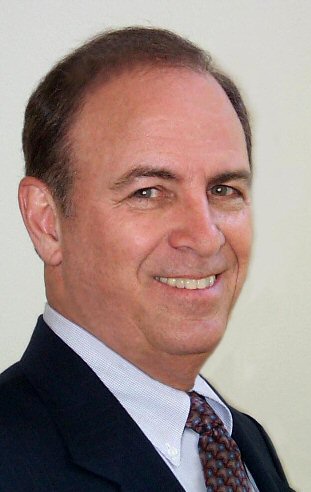Welcome

Thank you for visiting my Web Site. I'm new to building web
sites - so please pardon any "glitches"
you may run into.
I'm an engineer-marketing
person, working in the communications industry. Like many
marketing people, I started as an engineer but eventually moved to
marketing to gain a wider view of the industry.
The early days of my career were spent working as
an engineer on modems for AT&T Paradyne, where I rose to
Engineering Director. In March 1996, I moved
to Rockwell Semiconductor in Newport Beach, CA to run the
Marketing for central site modems. Shortly after I joined
Rockwell, I helped initiate the development of 56Kbps modems.
This started the 56K modem wars between Rockwell
and Lucent on one side and US Robotics on the other. What a
baptism into Marketing! But what an exciting time! The
whole company was focused on this one product and I was marketing
the central site version of it.
In case you don't remember the war, US Robotics
was a modem manufacturer, headquartered in Skokie, IL, who had a
strong position in the modem market, both in the central site and
with end users. An inventor by the name of Townshend came to
them and proposed the idea of a higher speed modem. They began
developing the modem in secret, with the goal of rolling it out to
their customers, through a software upgrade to both central site and
end user modems.
If they could have achieved this goal, they would
have dominated the modem business. Other modem manufacturers
would have had to come to US Robotics "hat in hand"
seeking a license to the 56K technology. Starting from
scratch, it may have taken up to a year for the other modem
manufacturers to develop their own 56K technology, and by that time,
US Robotics would have gained a dominate position in the market.
US Robotics made the mistake many people/companies
make in their situation - they talked too much. The senior
executives of US Robotics disclosed to financial analysts that they
had some new modem technology, and the financial analysts, being
what they are, spread the news far and wide.
Since we were already working on the technology at
Rockwell, we made the logical choice and announced it on September
10, 1996. This kicked off the war.
The problem I faced as central site marketing
manager was to get manufacturers of central site modem equipment to
use our 56K technology instead of US Robotics. They actually
had an incentive to work with us because US Robotics manufactured a
central site product, making them a competitor. The more
difficult problem was to get the ISPs to install and advertise our
56K technology, because end customers would buy modems with the
technology that their ISP used. It was a hard marketing slog,
and I had to offer financial incentives to both the equipment
manufacturers and ISPs to get our technology installed and
advertised.
One of my minor contributions to the fight was a paper
which explained how 56K modems worked. It received very wide
distribution on the web, as many ISPs put it on their web sites to
explain how 56K modems worked. You can probably still find it
on the web, or look here.
The net of the war is that, instead of dominating
the modem business, US Robotics wound up being sold off to 3COM, who
eventually sold them off to an Asian partnership. They still
exist as a shadow of their former selves. So loose lips really
do sink ships.
Although we were in the midst of the 56K war, I could see the time coming when higher speed communications would be
required. I began working on a number of ideas, but the one
which seemed most likely to succeed was the idea of developing a "splitterless" ADSL
modem technique which could be installed without a "truck
roll" to the customer's home. I organized a team to
develop the technology, which we demonstrated at Comdex
in 1997. We also filed a number of patents on the concept,
including a fundamental patent on "splitterless" operation,
patent number 6,101,216, on which I am the lead inventor.
The splitterless ADSL concept was embraced by the
communications industry, with a consortium being formed in January
1998, called the Universal ADSL Working Group (UAWG), headed by
Compaq, Intel, Microsoft, and most of the major US telephone
companies (Ameritech, Bell Atlantic, BellSouth, GTE, SBC, Sprint,
and US West). The work in the UAWG eventually resulted in an
ITU standard for splitterless ADSL, G.992.2.
I was promoted about this time to
the CTO Organization, and given free rein
to investigate other potential technologies/products. I began
by investigating voice over DSL, both symmetric and asymmetric
DSL. I published two papers on the technology, one for HDSL
and one for ADSL.
I then turned to the optical market, learning more
about the basic technology and the market. At the time, there
wasn't a lot of knowledge of optical communications within Conexant,
as Conexant was making a transition from being a modem maker to
being a manufacturer of a broad range of communications products. I
began attending the ANSI T1X1 and ITU Study Group 15 meetings and
reading the papers on optical communications and SONET/SDH,
eventually learning quite a bit about the technology and the
market. To disseminate this knowledge within the company, I
wrote several papers, including one each on optical
networks, SONET/SDH, and
digital
wrapper (G.709). I also gave classes on the technology
within the company. The SONET paper was chosen for inclusion
in the book Telecommunications Technology Handbook as
Chapter 6.
In June of 2001, I accepted a
position with TDK Semiconductor in Tustin, CA to do Strategic Marketing, reporting to the VP
of marketing. My
responsibilities are to develop the product roadmap for the TDK
broadband product line, develop strategic relationships.
During this time, I developed the concept of the "Personal Web
Server" which you can read about
here.

Last updated -
08/15/2008 |